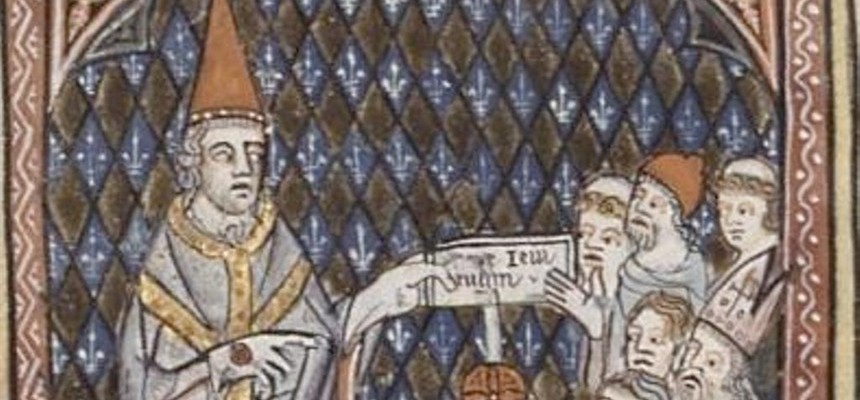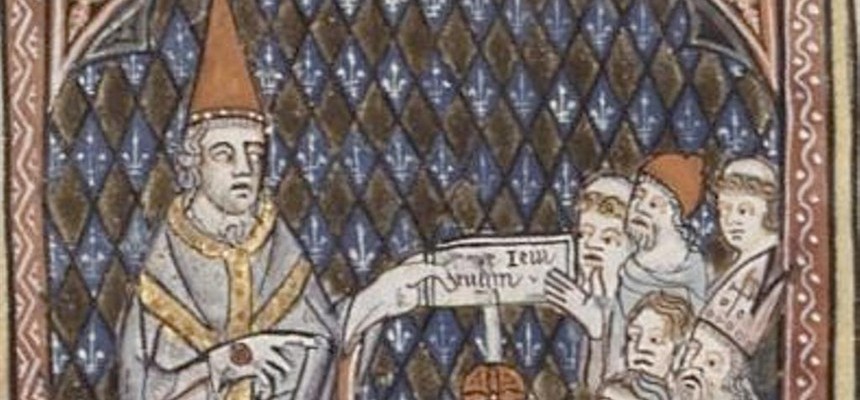
The sixteenth pope is a very controversial man whose sole biography was written by his arch-enemy, Hippolytus, as well as comments by another, Tertullian.
Callixtus was the household slave of Carpophyrus, a Roman close to the Roman court. This Carpophyrus was a Christian, as was Callixtus. In an attempt to help the widows and orphans, Carpophyrus gave his entrusted slave a large amount of money with the instructions to start what we would refer to as a bank. Callixtus either did not know how to organize such a thing or he was swindled. But, either way, after a rather short period, he lost much of the money. Once Carpophyrus found out about this great loss, he asked for an accounting.
Out of fear for his life, or his reputation, Callixtus ran away to Portia, a seaport, planning to get on the first ship out of there. His master having been informed of this move, followed on close pursuit and, finding that the slave was already aboard a ship in the harbor, hired a boatman to row him out. Callixtus saw his master coming from afar and, desperate to escape, jumped over the far side of the ship. Several sailors jumped after him and, despite his attempts at escape, took him to shore. Callixtus was turned over to his master, who dutifully brought him to Rome and had him housed in a jail.
After some time, Callixtus was released so that he could attempt to recover some of the lost money. In his zeal to receive past due funds from several Jews, he became involved in a brawl at a synagogue. New charges were filed against him and his punishment was time in the awful mines of Sardinia.
At this time, Marcia, mistress of the Emperor, and a Christian, contacted Pope Victor. She asked for a list of all the Christian men in the mines so that she could request release from the Emperor. Victor gave he a list, but it did not include Callixtus’ name. Marcia sent a deacon with the list. Callixtus begged to be taken also, it is said, and he was released. But, rather than send him back to Rome, he was left at Anzio to recover and his costs were covered by collections from the Roman Christians, implying that they were aware that he was better than his history showed.
When Pope Victor died, Pope Zephyrinus called Callixtus back to Rome. By this time, the Church owed some real estate that was used as a cemetary. Callixtus, now a deacon, was put in charge of the cemetary, which now bears his name. He also became the pope’s right hand man and archdeacon.
When Zephyrinus died, Callixtus was elected bishop by a definite majority of the deacons and laity. Hippolytus, the historian and prolific writer, was hoping to be elected. Apparently, he never forgave Callixtus and wrote very negatively against him. His reign, c218 – c223, was known for his mercy towards sinners. He allowed many back into the Church after due public penance. He allowed high ranking women to marry commoners, which was against the Roman law. This led to an accusation of his support of infanticide, on the basis that a grand lady could not have a baby with a commoner, since it would destroy her social standing. The pope also permitted second marriages amongst the clergy. He supported Saturday fasts causing some people to claim that he was anti-biblical. After all, God did proclaim the seventh day to be one of rest and relaxation and fasting was not relaxation.
The Montanists were still popular and would proclaim that prophesying as “Father, Son and Holy Spirit” made them more authoritative than Paul or Peter or Jesus. Callixtus did not come out against them sufficiently. The fact that other popes did not excommunicate them did not affect his enemies’ condemnations.
Callixtus appears to be a true martyr. But it was a popular uprising rather than a decree that killed him. Apparently, Callixtus built a small church on a spot that tavern-owners claimed. It is said that the pope was thrown into a well on the property. His body was retrieved and buried properly in the cemetery of Calepodius on the Aurelian Way. The man who saved his body was killed the next day. To this day there is a Church of St. Callixtus with a well in it. Nearby is the beautiful Sta. Maria in Trestevere, built by Pope Julius.
St. Callixtus, pray for us.


Recent Comments